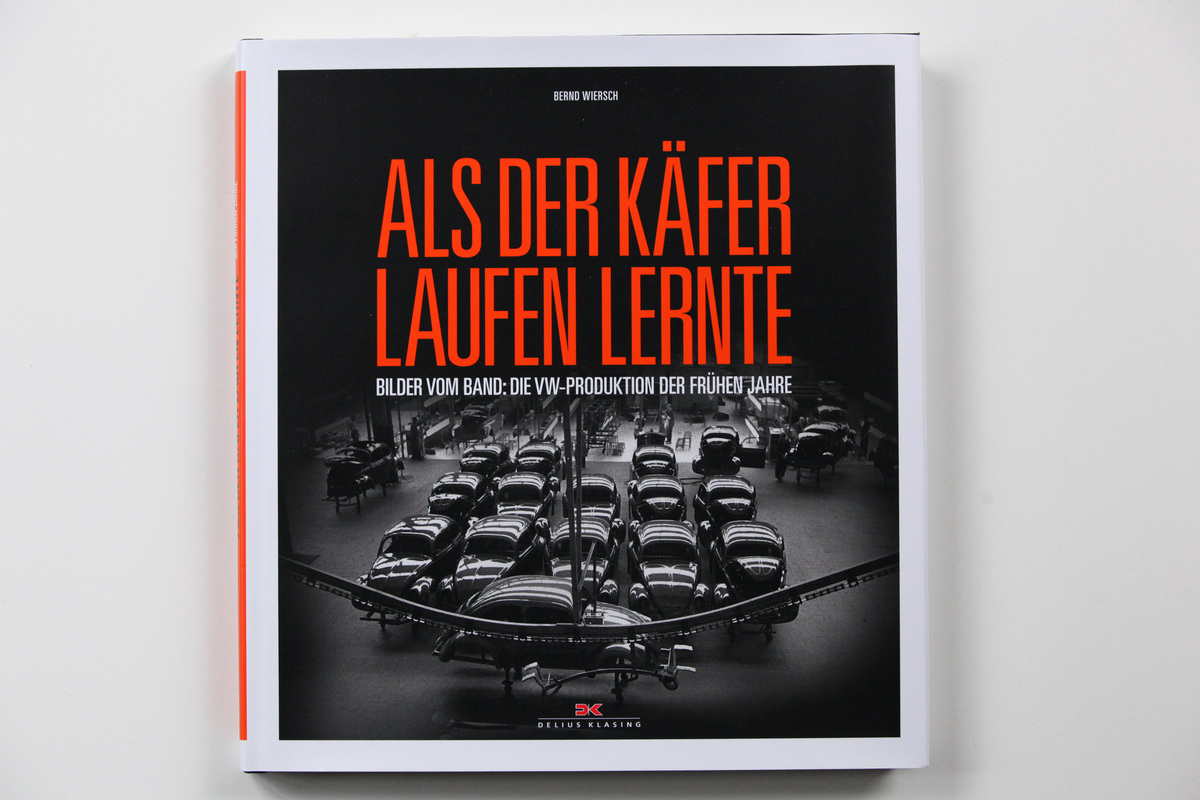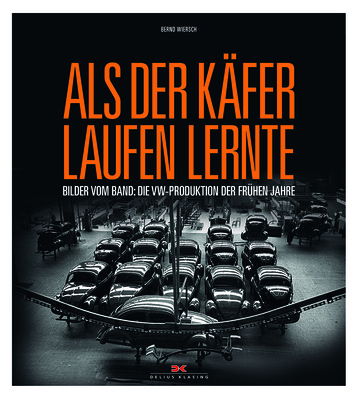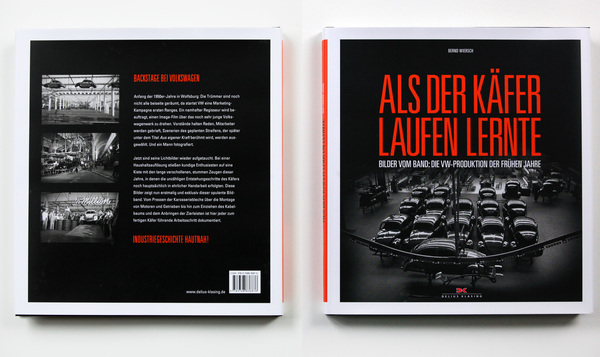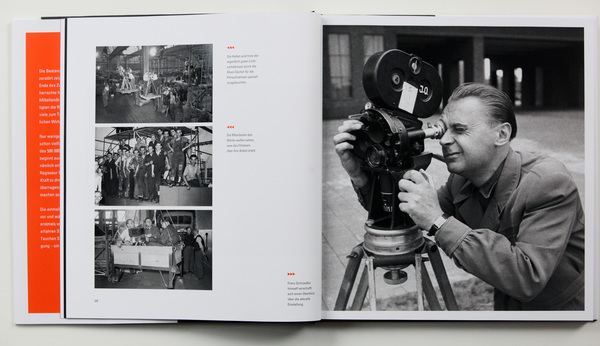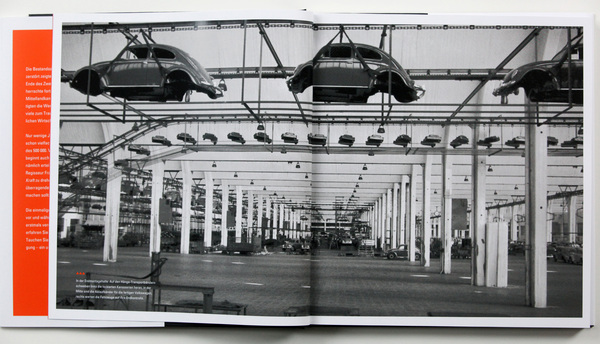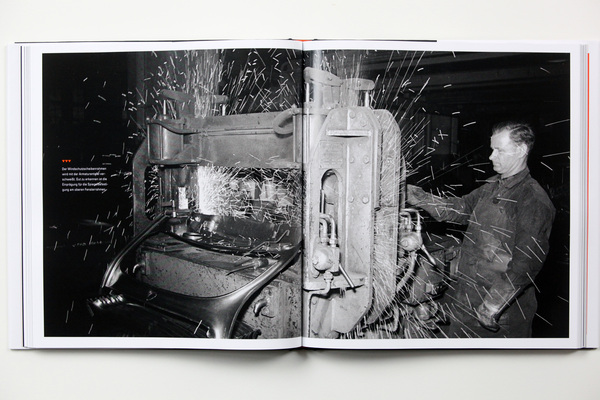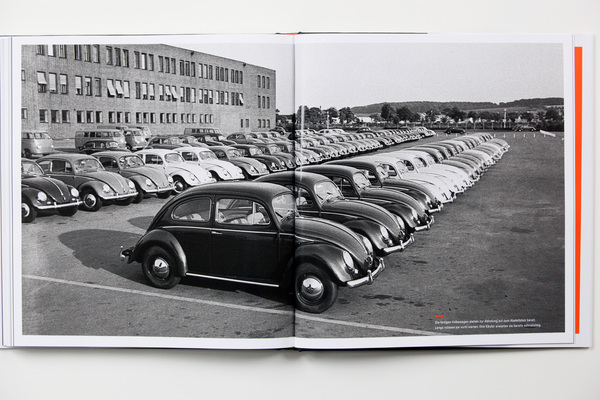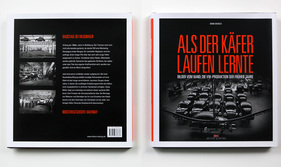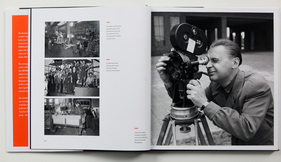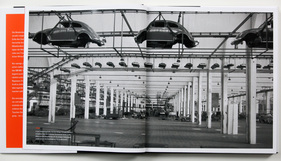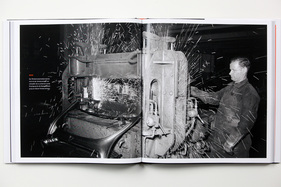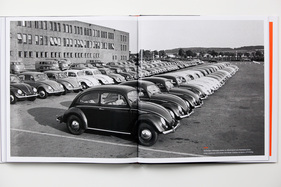The VW Beetle was born in the pre-war years, but it was not until after the Second World War that actual production got underway. While most of the modest output in the early years went to the occupying powers in the form of reparations, the Wolfsburg-based company increased its efficiency and production capacity year after year. By 1953, half a million Beetles had already been produced, and two years later the million mark was reached. The rear-engined car had become a successful model, eventually even overtaking the Ford Model T in terms of unit sales.
Immersing yourself in production
What did it actually mean to produce an automobile in a slowly recovering post-war Germany? How did the ever-increasing masses of workers work on the German automotive miracle of success? Which work processes were already being taken over by machines at the time? How, for example, were the famous wheel covers produced?
The book Als der Käfer laufen lernte: Bilder vom Band: die VW-Produktion der frühen Jahre provides answers to these questions - with extensive visual material and concise texts.

Unique documentation
While the 500,000th Beetle rolled off the production line in the summer of 1953, director Franz Schroedter was shooting the feature film "Aus eigener Kraft", which was intended to demonstrate the qualities of the car to Beetle buyers and VW employees alike. The production of the vehicle was meticulously recorded in every detail using sophisticated technology. The resulting color film, which lasted over an hour, can be viewed online (albeit in less than edifying quality in ten episodes) on YouTube .
At the same time, not only the filming but also the production processes were followed with cameras. This resulted in unique photos that show workers, machines, products in the various stages of production and the production environment in beautiful black and white images.

Not a reader
Of course, the book describes the post-war environment and explains the production processes. But it is the pictures that make up the essence of this book. The text, written by Bernd Wierch, a proven expert on Volkswagen history, provides the framework, the pictures tell the story. You can immerse yourself in this book for hours, searching the mostly large-format pictures for further details. You can enjoy the aesthetics of the intentional and unintentional symmetries, watch women and men at work.
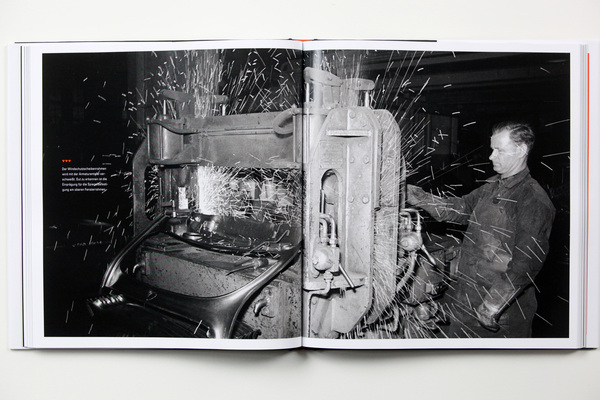
Not just for Beetle fans
Naturally, fans of the crawling beast from Wolfsburg will have an increased interest in this book. But actually, the type of vehicle produced is almost irrelevant. The interesting thing about the 240 pages are the insights into the production techniques of the post-war years. Anyone interested in economic history will discover hidden treasures in this book of photographs, as will anyone who wants to find out more about the machine technology and manufacturing processes of the time. In fact, you don't even have to be interested in cars to be fascinated by this book.
At 39.90 euros, the book is no bargain, but the print quality and appearance of the photo book are impressive and it also makes an excellent gift.
Bibliographical details
- Title: "When the Beetle learned to walk - pictures from the assembly line: VW production in the early years"
- Author: Bernd Wiersch
- Language: German
- Size: 240 pages, 170 b/w photos
- Format: 28 x 29.7 cm, hardcover with dust jacket
- Publisher: Delius Klasing
- Edition: First edition 2013
- Price: Euro 39.90 (D), Euro 41.10 (A), CHF 53.90 (CH)
- ISBN: 978-3-7688-3687-6
- Order: via publisher Delius-Klasing or via Amazon.de
, or at the relevant bookstore
